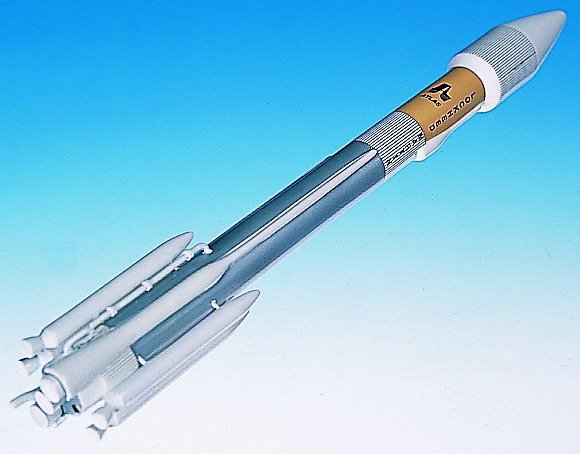|
|
The
Atlas ballistic missile began with the US Army Air Corps request
for proposal in October 1945, which led to development in the
1950ís of the Atlas, Navaho, Snark, and Matador/Mace missiles.
By January 10, 1946, Consolidated-Vulteeís engineers submitted
their proposals for two 6,000-nautical mile missiles: one
subsonic, winged, and jet powered; the other supersonic,
ballistic, and rocket powered. On April 19, Convair
received a contract for $1,893,000 to include fabrication and
testing of 10 MX-774 Hiroc missiles to verify Bossartís
innovative concepts. Captive testing of the MX-774 research
rockets began in San Diego in 1947. In June, Consolidated Vultee
was notified that it had lost the cruise missile competition;
Northrop and Martin received contracts for development of the
subsonic jet-powered designs. Defense cutbacks forced the Air
Force to terminate the contract in July 1947, only three months
before the first scheduled flight.
The outbreak of the Korean war and the beginning of the
cold war loosened the federal purse strings. Convair received a
new contract (MX-1593) in September 1951 to begin design of a
ballistic missile incorporating the design features validated by
the MX-774. In 1953 the now-Convair Division of General Dynamics
presented a plan to the Air Force for an accelerated program.
A full
go-ahead for the Atlas design was ordered in January 1955 as
Weapon System WS107A-l. At Convair the project was known the
Model 7. In September 1955, faced with intelligence
reports of Russian progress on their ICBM, the Atlas received
the highest national development priority. The project became
one of the largest and most complex production, testing, and
construction programs ever undertaken. The first propulsion
system and component tests were conducted in June 1956; the
first captive and flight-test missiles were completed later the
same year.
The first Atlas A flight took place on June 11, 1957.
The first operational missile was the the Atlas D. Many
were assigned to the Strategic Air Command to provide nuclear
deterrence; other were used to launch Mercury manned spacecraft
into orbit. By 1964, SAC had replaced the Atlas with the
Minuteman missile. The Atlas were then used to launch
satellites. By use of Agena and Centaur upper stages, the
Atlas became the medium-lift workhorse of American manned,
planetary, and geosynchronous-orbit space programs.
In one of the great ironies of modern times, in the
late 1990's, the United states purchased from Russia new engines
for the Atlas. Two of them are used in place of the
booster stage. This newly-designed missile was designated
the Atlas II. |
 |
Atlas II Missile
Standard Series. 1/144th scale. 2' diameter x 12"
long.
No. USM3D-ST. Only $129.95 |
|
